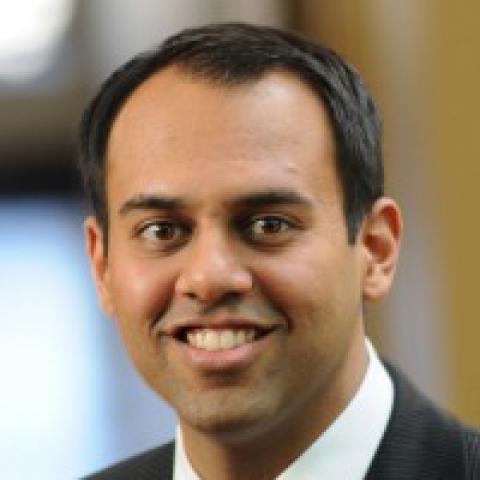Recent research attributes the majority of health care spending to a small number of individuals, sometimes described as “high-need, high-cost” — the 5 percent of the population who account for 50 percent of expenditures. One way to improve care for high-need, high-cost patients, and make our health system more effective for everyone, is to identify promising health delivery and payment innovations from around the world and foster their adaptation in the United States to drive transformative, rather than incremental, change.
As part of a multiyear effort, the Duke-Margolis Center for Health Policy and the Duke Global Health Innovation Center have partnered with the Commonwealth Fund to identify global and domestic innovations, from patient education initiatives to team-based delivery models, that can drive these changes. Today, we are working closely with five partner health systems — CareSouth Carolina, Mount Sinai Health System, Henry Ford Health System, the University of Arkansas for Medical Sciences, and Duke University Health System — to explore how they can implement best practices from our global innovation database to improve health outcomes and reduce total cost of care for their high-need, high-cost populations. Through this process, we developed several recommendations and lessons for identifying and implementing health innovations to support the transformation of health systems across the U.S.
During our review of the global landscape of health innovation, we identified a number of promising models relevant to the U.S. Examples of providers with standout innovations include:
- Noora Health, India: A nonprofit focused on reducing unplanned hospital readmissions by training physicians and nurses to have meaningful, patient-specific discussions with caregivers and patients prior to discharge and educating caregivers to support patients after discharge. To date, Noora Health has trained more than 200,000 family members and shown a reduction in postsurgical complications and readmission rates.
- Saúde Criança, Brazil: A health system offering customized action plans to help vulnerable families access social services and resources. Saúde Criança creates customized plans focusing on the five different domains of well-being: health, income, housing, education, and citizenship. Saúde Criança’s approach has assisted more than 43,000 people to date, with families seeing a 35 percent average increase in income and 60 percent decrease in rehospitalization days.
- Possible Health, Nepal: A primary care provider that extends the reach of providers in rural areas. Possible Health deploys community health workers to carry out disease surveillance, deliver basic primary care services, and provide long-term control of chronic diseases. This hub-and-spoke model enables community health workers to remain both locally based and broadly connected via the remote transmission of key clinical data.
Traditionally, health innovation research stops at the identification stage, with insufficient investment in the science of implementation. However, with the support of the Commonwealth Fund, we have sought to translate how our partner health systems could adapt an “innovation package” of global best practices to address the specific needs of their high-need, high-cost patients. Our goal was to identify a series of innovative models that could meld together to support systemwide change.
Translating health innovations across systems is a complex endeavor, especially in the U.S., where some practitioners have a potential bias against international innovations. Advancing health innovation requires not only identifying promising models, but also developing an evidence-based approach for spreading them and highlighting the value proposition for U.S. health systems.
Through this work, we have uncovered insights about opportunities for system transformation in the U.S. These include:
1. Alternative payment models provide flexibility to support new innovations
Value-based payment models such as capitation or shared-saving contracts provide greater financial latitude to test and scale innovations. Though the health systems we worked with operated in a variety of payment arrangements, all considered value-based contracts optimal for launching innovations. The most commonly selected innovations in our project — integrating health and social services, extending care beyond the clinical setting, and utilizing nonclinical workers — are not easily reimbursed in a fee-for-service model. But there is strong evidence that investing in these types of “upstream” activities, which are more likely to be covered in a value-based arrangement, can reduce health care costs for high-need, high-cost populations.
2. Systemic change requires more than “point” innovations
When reviewing the landscape, we found most innovations to be “point solutions” that aim to improve a specific part of care while leaving the functions and design of the broader system intact. While valuable, we believe these kinds of activities, such as a standalone mobile application for monitoring disease, fall short of care transformation. Multifaceted problems must be met with equally comprehensive solutions. Leaders should therefore focus on identifying bundles of promising strategies that together can reorient care toward the Triple Aim of better experiences and quality at lower cost. For example, to incorporate care coordination into standard clinical practice, providers may need to combine technical solutions like interoperable electronic health records; governance structures, such as incentives that define accountability and promote team-based care; and workforce development, including investment in frontline staff such as community health workers.
3. The journey can influence the destination
The process of creating sets of innovations — and not just their implementation — can positively influence organizational reforms. Our partner health systems convened teams from multidisciplinary backgrounds, creating a supportive forum for health professionals — many of whom had never met — to develop solutions, think through the consequences of the solution, and build a rationale for adopting the innovation. The process served as an exercise in self-reflection, providing an opportunity for team members to better understand their own organization. Moreover, thinking about external innovations helped team members reevaluate internal processes with a fresh perspective, leading to novel ways of coordinating care across service lines.
Health systems across the world are engaging in a massive effort to reengineer the way care is delivered and paid for to improve outcomes and reduce costs. We believe this movement can benefit health systems in the United States. Rather than reinvent solutions to common problems, our work provides valuable use cases for organizations to more easily identify and implement sustainable approaches to adopt and scale innovations for their high-need, high-cost patient populations. In the next phase of work, we plan to develop a blueprint for piloting these innovation packages for dissemination in the health policy community to support broader efforts to reconfigure health systems to meet the needs of America’s most vulnerable patients.





